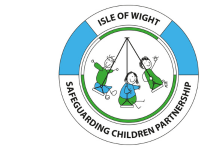The legal context and framework
It is important to understand the legal context and framework around child-on-child abuse. It is also important to remember that the child who is alleged to have displayed harmful behaviour is a child first and needs to be safeguarded.
If the decision is made by a school or college to report an incident to the police for investigation, due to the seriousness of the incident or for other aggravating circumstances, the school or college should cease their own investigation, having asked only enough questions to establish the basic facts of the incident. Every effort should be made by the school or college to preserve any relevant evidence. Initial enquiries undertaken by the school or college should be fully documented as they may be required if the matter goes to court. This includes recording questions asked to young people and their responses.
Where behaviour displayed by a child breaks a law, the professional response will reflect that they are a child and will be different than if the behaviour had been displayed by an adult. The information below outlines the response and how this will vary depending on the age of the child.
- Children under 10 – The age of criminal responsibility in the UK is 10 years old which means that children under 10 years old cannot be charged with committing a criminal offence. Police are however still able to talk to children under the age of 10 and may consider support from children’s social care with this.
- Children between 10 and 17 – Children aged between 10-17 who commit an offence could be charged by the police, following a police investigation. The outcome of this can be varied, but some children will work with the Youth Justice Service on a voluntary intervention, an out of court disposal, or a court order, with custodial sentences as the outcome for the most serious offences. It is important to note that not all outcomes from the police result in a criminal record for the child and not all outcomes result in intervention from the Youth Justice Service.
- Young people aged 18 – Those aged 18 and over are treated as an adult in law. If they receive a custodial sentence, this will be spent in a centre that holds 18 to 25-year-olds.
Keeping Children Safe in Education outlines that sexual violence and sexual harassment can occur between two or more children of any age and sex, from primary through to secondary stage and into college. Sexual violence and sexual harassment exist on a continuum and may overlap; they can occur online and face-to-face (both physically and verbally) and are never acceptable.
Sexual Violence
Reference to sexual violence within this toolkit does so in the context of child-on-child sexual violence. When referring to sexual violence, this is referring to sexual offences under the Sexual Offences Act 2003. They are described in Keeping Children Safe in Education, as captured below:
Rape: A person (A) commits an offence of rape if: he intentionally penetrates the vagina, anus or mouth of another person (B) with his penis, B does not consent to the penetration and A does not reasonably believe that B consents.
Assault by Penetration: A person (A) commits an offence if: s/he intentionally penetrates the vagina or anus of another person (B) with a part of her/his body or anything else, the penetration is sexual, B does not consent to the penetration and A does not reasonably believe that B consents.
Sexual Assault: A person (A) commits an offence of sexual assault if: s/he intentionally touches another person (B), the touching is sexual, B does not consent to the touching and A does not reasonably believe that B consents. Professionals should be aware that sexual assault covers a very wide range of behaviour so a single act of kissing someone without consent or touching someone’s bottom/breasts/genitalia without consent, can still constitute sexual assault.
Causing someone to engage in sexual activity without consent: A person (A) commits an offence if: s/he intentionally causes another person (B) to engage in an activity, the activity is sexual, B does not consent to engaging in the activity, and A does not reasonably believe that B consents. This could include forcing someone to strip, touch themselves sexually, or to engage in sexual activity with a third party.
Understanding Consent
Keeping Children Safe in Education outlines that consent is about having the freedom and capacity to choose. Consent to sexual activity may be given to one sort of sexual activity but not another. Consent can be withdrawn at any time during sexual activity and each time activity occurs. Someone consents to vaginal, anal or oral penetration only if s/he agrees by choice to that penetration and has the freedom and capacity to make that choice.
- A child under the age of 13 can never consent to any sexual activity.
- The age of consent for sexual intercourse is 16.
- Sexual intercourse without consent is rape.
Consent needs to be considered in the context of capacity to give consent. For example, a child over the age of 16 may not be able to consent due to their additional needs.
This video explains consent.
It is a criminal offence to make, share or possess indecent images of persons under the age of 18. The legislation regarding indecent images of children relates to anyone under the age of 18. This can include photos and videos involving nudity or of a sexual nature. It is unlawful regardless of whether the subject of the image consents to the making, sharing or possession of the image.
HM Government ‘Sharing Nudes and Semi-Nudes: Advice for Education Settings Working With Children and Young People’ provide guidelines to support professionals in situations when:
- A person under the age of 18 creates and shares nudes and semi-nudes of themselves with a peer under the age of 18.
- A person under the age of 18 shares nudes and semi-nudes created by another person under the age of 18 with a peer under the age of 18.
- A person under the age of 18 is in possession of nudes and semi-nudes created by another person under the age of 18.
Ditch the Label undertook an annual bullying survey in 2020 involving 13,000 12- to 18-year-olds across the UK. 25% of these children reported that they had been bullied within the last 12 months. All professionals have a role to play in identifying, managing and responding to bullying, which includes understanding the types of bullying that are illegal and constitute a crime.
The law states some forms of bullying are illegal and should be reported to the police. These include:
- Violence or assault- This is an act which intentionally or recklessly cause violence to another.
- Theft- A person is guilty of theft if they dishonestly appropriate property belonging to another with the intention of permanently depriving the other of it.
- Repeated harassment or intimidation, for example name calling, threats and abusive phone calls, emails or text messages.
- Hate crimes- These are acts of violence or hostility directed at people because of who they are or someone perceives them to be. This might be based on disability, race, religion, transgender identity, or sexual orientation.
By law, all state schools must have a behaviour policy in place that includes measures to prevent all forms of bullying among pupils. While the legislation does not include private/independent schools it is expected that most will have a behaviour policy that reflects this requirement. This policy is decided by the school. All teachers, pupils and parents must be told what it is.
Anti-discrimination law
Schools must also follow anti-discrimination law. This means staff must act to prevent discrimination, harassment and victimisation within the school. This applies to all schools in England and Wales, and most schools in Scotland.
It is important to understand that children can be perpetrators of Child Criminal Exploitation and Child Sexual Exploitation. Grooming offences are committed by those over 18 years old but there are other legislations that may be relevant when a child has harmed another child through criminal exploitation or sexual exploitation.
Therefore, concerns should be reported, as it will allow for the multi-agency approach to be implemented and an effective safeguarding response to be provided for all involved children.

